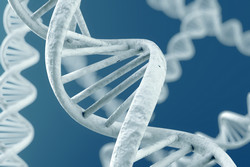The molecular basis of genome maintenance
DNA damage is the leading source of genomic instability and a cause of carcinogenesis. DNA damage in the form of double-strand breaks (DSBs) can be a result of either environmental stress or endogenous DNA metabolic processes. Under normal circumstances, DNA lesions are repaired through complex enzymatic processes, which are, however, hampered by the accessibility of the DNA. The scope of the EU-funded project INOHR (Chromatin remodeling in DNA repair: The role of the INO80 complex) was to investigate the chromatin remodelling activity of the human INO80 complex proposed to play a role in the homologous recombination-based repair of DSBs. Apart from DNA repair, INO80 is important for gene expression regulation and DNA replication, and is evolutionarily conserved. The human INO80 is a large complex, consisting of 20 essential and regulatory subunits, but the precise mechanism by which it functions remains undetermined. One of the major achievements of INOHR was the expression of six human histones alongside the cloning of nucleosome positioning sequences (NPSs) leading to arrays of NPSs of various lengths. By labelling the histones with fluorophores, scientists reconstituted fluorescent histone octamers, the core structure of nucleosomes. Collectively, these efforts allowed single-molecule studies of chromatin remodelling through microscopy-based observation of the INO80 complex function. Overall, the INOHR study has provided unprecedented macromolecular complexes to further research the molecular mechanism of DNA repair. The generated tools will fuel future research in protein-DNA interaction studies at the single molecule level. They can be used to study additional DNA processing enzymes that play an integral role in maintaining DNA integrity.







